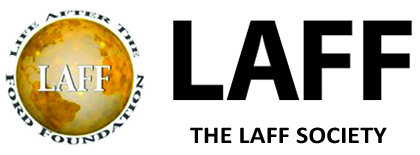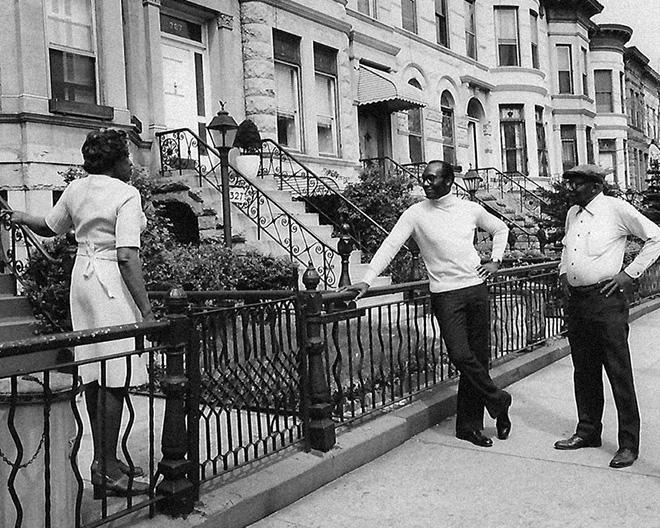NEWSLETTER
|
He Left the World a Better Place By Susan Berresford
This article appeared originally in The Chronicle of Philanthropy on January 3 and is reprinted with permission.
Frank Thomas always said we should leave the earth better than we found it. He did that at the Ford Foundation, which he led brilliantly for 17 years.
His modesty and reserve, well known to those of us who worked with him, meant that the structural and program changes he wisely made were often unheralded within philanthropy, which tended to focus instead on the fact that he was the first Black leader of a major philanthropy.
I was lucky to have been at the Foundation before and after his tenure, and I am pleased now to help celebrate his legacy after his death in December at age 87.
When Frank was named president of Ford in 1979, he inherited a strong and forceful institution whose future was threatened by a period of dangerous overspending and a sharp asset decline. I recall a board meeting when trustees confronted the possibility of dissolution of the Foundation should the overspending continue. Frank persuaded the board that the Foundation should be stabilized by immediately reducing costs and setting future expense levels using a formula based on changes in asset value over time.
With the board’s agreement, Frank introduced new spending and investment policies and significantly reduced the staff’s size. Putting these plans in place led to institutional stress and turmoil, which he managed with dignity and determination. But it also had the desired effect. Ford’s financial health was restored, and through the rest of his presidency both the endowment and spending grew substantially.
Frank’s fundamental interest was to ensure that Ford would help reduce human suffering and disadvantage, and support people and institutions addressing peace, education, culture and democratic governance. He inherited an institutional structure with clear separation between the United States and international grant-making programs and staff; within each geographic domain, strong program identities had created silos that competed rather than reinforced each other. As a trustee, Frank had pointed out the possibilities of cross-program and cross-national learning, and so when he became president, he promoted the concept and practice of “one foundation”.
With that concept in mind, and after studying the Foundation for a year, he re-organized the grant-making operations, identifying a unified worldwide agenda that enabled staff and grantees to visit and learn from each other and staff to move from one part of the world to another. Today, such ideas are the norm, but when Frank introduced them in the early 1980s, they were unsettling to those accustomed to more traditional ways of working.
I can speak with authority about this because I had at times been reprimanded for trying to bridge Ford’s U.S.-international divide in grant-making, and I saw the resistance he encountered when he re-organized the Foundation.
A Focus on Diversity
Frank was also committed to building a diverse staff that resembled the world we worked in and that understood his ideas and approach. He often said that the strength of the Foundation resided significantly in its employees worldwide. This meant not only hiring and supporting talented people with fresh perspectives drawn from varied backgrounds but also expanding grant-making programs advancing rights and opportunities for women, people of color and those from disadvantaged and marginalized backgrounds.
In fact, the first major grant-making effort he proposed to the board involved doubling the size of women’s programs worldwide and asking the Foundation to look to the role and needs of women no matter what kind of work their grants supported.
Equally important was Frank’s determination to build the Foundation’s respect for its grantees. For example, he encouraged them to use grant funds to pay for the consultants they needed rather than having the Foundation make the arrangements and require the consultants to report to the grant-making staff. Frank had found the former Ford practice misguided when he was a grantee; he was head of the Bedford Stuyvesant Restoration Corporation, a New York community development group.
This approach also led to rethinking how Ford deployed staff members in its developing countries programs. In 1979, the Foundation had hundreds of experts serving as advisers in overseas government departments. Frank ended the practice and instead focused staff and grant making on support for emerging civil society organizations.
Warning Against Arrogance
In these and other ways, Frank Thomas modernized the Foundation and equipped it for future generations. I was among the lucky beneficiaries of his philanthropic vision, following him as president. His changes empowered my team and grantees for the next decade and more.
Since his death, I have received many emails from staff and grantees worldwide who knew his gifts and accomplishments. Many of his colleagues spoke not only about what he did but also how he did it—with modesty, quiet wisdom, steely determination. and care for each of us working with him.
Many staff members recalled how he warned them not to feel self-important just because they deployed large sums of money. They recall his admonition to remember that their satisfaction should come from directing the grants for the public good: strengthening leaders and their organizations, nurturing new ideas and bringing attention to urgent needs and problems. His commanding presence reinforced the strength of these ideas and values.
Of course, Frank’s leadership extended well beyond Ford, including work in government and the business world. He was well known for participation in efforts to end apartheid in South Africa and in that country’s rebuilding. He played a crucial role in the 9/11 Fund, helping restore the city he loved and lived in. He was a man of great talent and strength, and we are all better people because of what we learned from him. Frank Thomas surely left the Ford Foundation and the world better than he found them.
Susan Berresford was president of the Ford Foundation from 1996 to 2008. She joined the Foundation in 1970 as a program assistant, then led its grant-making efforts to serve women before she was tapped for several senior leadership roles.
_______________________
LAFF Remembers Franklin Thomas: Co-Presidents’ Reflections by Suzanne Siskel and Betsy Campbell
He Left the World a Better Place by Susan Berresford
A Man of “Vision, Tenacity and Dignity” by Barron “Buzz” Tenny
Celebrating the Remarkable Legacy of Franklin Thomas by Darren Walker
“A True Humanitarian” by Shepard Forman
From the Class of ’92: “We worked for Frank” by Radhika Balakrishnan, Mahnaz Ispahani Bartos, Natalia Kanem, Anthony Romero and Marcia Smith
Grantees: “Up Front and in the Center” by Charles Bailey
Taking Risks “Is What We Do” by Steven W. Lawry
A Leader With “Vision and Courage” by Barry D. Gaberman
Forging “New Paths on Multiple Fronts” by Judy Barsalou
“The Tallest Tree in Our Forest” by Akwasi Aidoo
|


